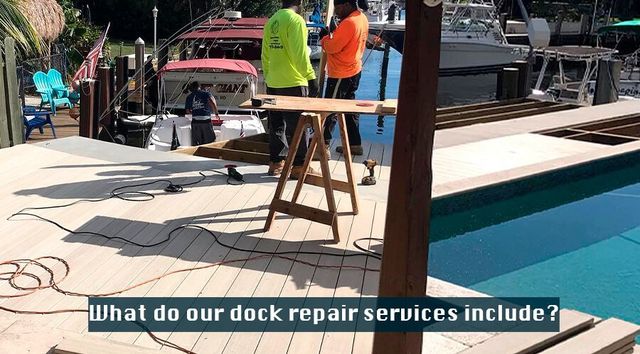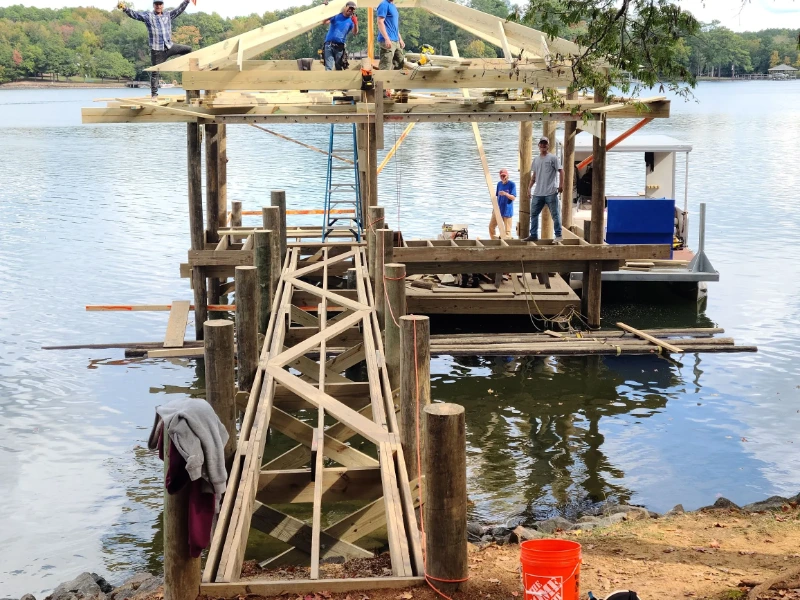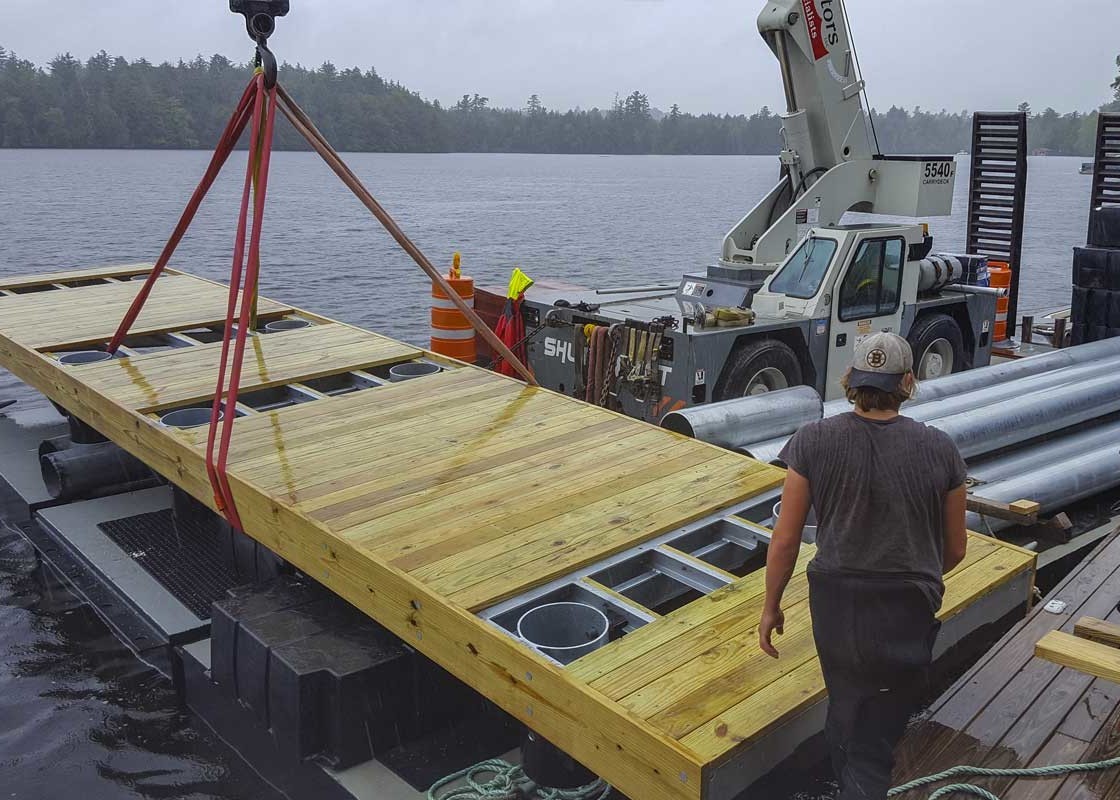Common Concerns That Cause Costly Dock Repairs
Common Concerns That Cause Costly Dock Repairs
Blog Article
Effective Dock Repair Techniques: Making Certain Architectural Honesty
Making certain the architectural stability of anchors through efficient fixing techniques is critical for the durability and security of aquatic facilities. Consequently, picking the ideal repair service materials, such as corrosion-resistant alloys and composite products, is crucial for toughness.
Evaluating Dock Damage
Examining dock damages is a crucial initial step in ensuring the structural honesty and security of any type of docking facility. Trick aspects to take a look at include the dock's structure, pilings, decking, and hardware (Dock Repairs).
Structural engineers or certified assessors generally execute these assessments utilizing specialized tools and methods. Underwater evaluations might employ finder tools or remotely operated cars (ROVs) to find immersed damage. Over water, aesthetic evaluations are complemented by making use of moisture meters and various other analysis tools to reveal underlying concerns not instantly noticeable to the nude eye.

Deciding On Repair Work Materials
Picking the ideal fixing materials is a critical step in the dock repair process, one that straight affects the longevity and efficiency of the fixed framework. Product choice need to be driven by factors such as ecological conditions, load-bearing demands, and compatibility with existing dock elements. Timber is a standard choice for docks due to its all-natural resilience and visual charm. Choosing the right kind of wood, such as pressure-treated lumber or naturally rot-resistant species like cedar or teak, is crucial to withstand marine environments.
Along with timber, composite products are increasingly preferred due to their longevity and reduced maintenance demands. Compounds, generally made from a mix of plastic and timber fibers, offer exceptional resistance to rot, insects, and UV damages. For metal anchors, picking corrosion-resistant alloys such as galvanized steel or marine-grade aluminum is necessary to avoid rust and ensure architectural integrity in saline water conditions.
Epoxy resins and marine-grade sealants are essential for repairing splits and sealing joints, offering a water resistant obstacle and boosting the dock's general stamina. By thoroughly choosing high-quality products, dock repairs can attain long-lasting outcomes, consequently protecting against future degradation and guaranteeing safe, reliable usage.
Architectural Reinforcement Methods
Reliable structural support techniques are vital in making certain the security and longevity of dock repair work. One essential approach entails making use of steel or composite reinforcement bars (rebar) within concrete structures. Rebar gives additional tensile stamina, avoiding fractures and distributing loads more equally. This method is specifically efficient for docks revealed to heavy tons or extreme environmental problems.
Another crucial method is the application of fiber-reinforced polymers (FRP) These products offer high strength-to-weight proportions and exceptional resistance to deterioration, making them perfect for strengthening wood or concrete anchors. FRP can be applied in strips or sheets and bonded with epoxy resins to improve structural stability.
Supporting and anchoring systems likewise play a crucial function in structural support. Cross-bracing, utilizing steel or wood beams, can combat lateral forces, decreasing guiding and movement. Securing systems, such as helical piers or driven heaps, provide a stable structure by transferring loads to much deeper, much more secure soil layers.
Finally, the combination of load-distribution plates can assist distribute weight extra uniformly across the dock's surface, alleviating local tension factors. These methods collectively make sure that anchors remain safe and durable, capable of standing up to the rigors of their operational atmosphere.
Advanced Fixing Methods

An additional sophisticated technique involves undersea welding, which permits for repair work to be conducted without the requirement to dewater the location. This technique is specifically advantageous for resolving architectural concerns in submerged dock parts, guaranteeing very little interruption to procedures. Enhanced welding methods, combined with robotic systems, provide precision and integrity, therefore extending the lifespan of the dock.
Additionally, cathodic defense systems are carried out to stop corrosion in metallic dock structures. By utilizing sacrificial anodes or amazed current systems, these methods effectively mitigate the electrochemical processes that lead to material damage.
Lastly, advanced monitoring modern technologies, such as structural wellness surveillance (SHM) systems, offer real-time data on the condition of dock frameworks. These systems make it possible for positive upkeep and timely treatments, inevitably making sure the lasting structural stability of the dock.
Upkeep and Avoidance
Upkeep and avoidance are basic principles that underpin the durability and safety and security of dock frameworks. Normal inspections are critical, enabling early detection of damage, potential weak points, and environmental influences. A proactive method, involving regular look for deterioration, rot, and structural shifts, alleviates costly repairs and extends the dock's functional life.
Safety nets should consist of applying safety coverings to metal elements to defend against rust and using cured timber to resist degeneration. Furthermore, making sure appropriate drainage and air flow can protect against water buildup, which is an usual reason for architectural destruction. Integrating quality products and adhering to producer standards throughout building and construction and repair phases also play vital roles in enhancing sturdiness.

Training personnel in dock maintenance ideal techniques makes next sure constant application of precautionary steps. Leveraging technological advances, such as drones for examinations and sensing units for real-time tracking, can even more enhance maintenance initiatives. By focusing on upkeep and avoidance, dock owners can guarantee architectural honesty, operational safety, and cost-effective monitoring over the dock's life expectancy.
Final Thought
In conclusion, maintaining the architectural stability of marine facilities requires extensive dock fixing methods. Advanced repair techniques, paired with normal upkeep practices, guarantee the dock continues to be operational and safe under diverse environmental conditions.
Making sure the structural honesty of anchors through efficient fixing techniques is extremely important for the durability and safety and security of marine centers.Choosing the ideal repair materials is a pivotal action in the dock restoration procedure, one that straight influences the durability and efficiency of the repaired structure.Efficient architectural reinforcement techniques are crucial in ensuring the security and long life of dock fixings. By prioritizing upkeep and prevention, dock proprietors can guarantee architectural honesty, functional safety and security, and affordable administration over the dock's life-span.
In final thought, keeping the architectural integrity of marine centers demands comprehensive dock repair techniques.
Report this page